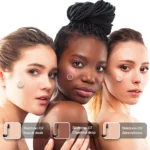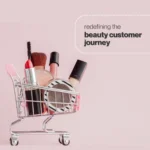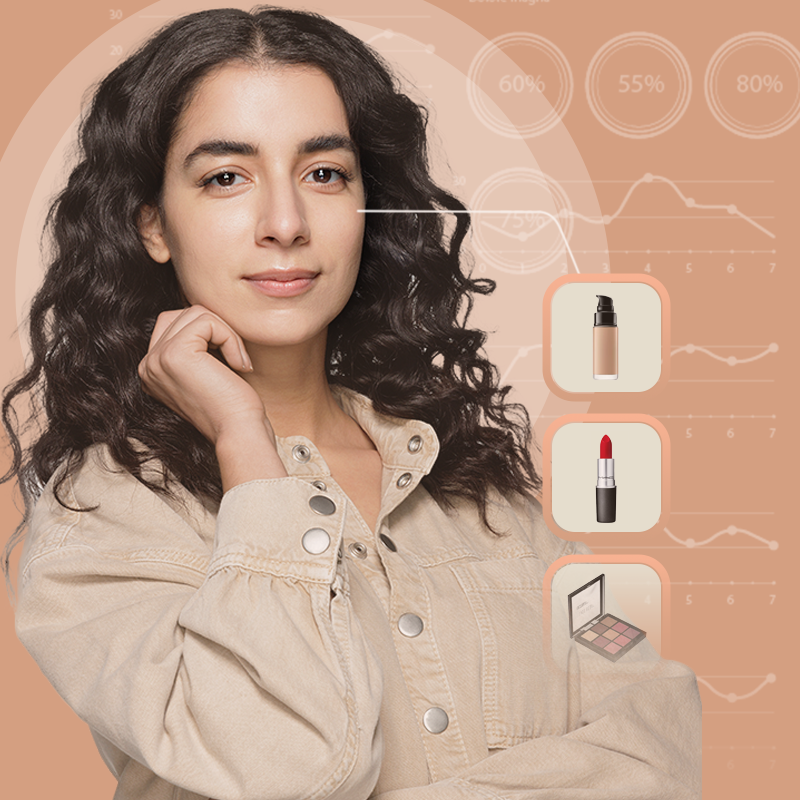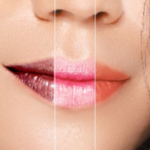The beauty industry is undergoing a seismic shift. From AI-driven personalization to immersive AR shopping experiences, technology is transforming every touchpoint in the customer journey.
But it’s not just about flashy tools – it’s about meeting the evolving expectations of consumers who demand inclusivity, convenience, and authenticity from the brands they support.
This cosmetics industry report dives deep into the key trends shaping the beauty world, from the power of personalization to the rise of Gen Z and Gen Alpha as beauty’s most influential consumers.
Read to uncover the insights, innovations, and strategies that will define the future of beauty.
- Cosmetics industry report: The state of the beauty and cosmetics industry
- Beauty tech: Transforming shopping experiences
- Inclusivity in beauty: Driving loyalty and growth
- Beauty marketing: Tech, trends, and inclusivity
- Sustainability and ethical practices: Paving the way for a cleaner future
- Embrace change, empower your brand
Cosmetics industry report: The state of the beauty and cosmetics industry
➥ Market size
According to last year’s projections by Grand View Research, the beauty industry’s market value in 2023 was estimated at $557.24 billion. Moreover, the projected market value by 2030 was set at $937.1 billion.
Now, for 2024, Statista estimates even greater growth, with the beauty and personal care market reaching $650.10 billion by the end of the year.
When it comes to the global beauty tech market, Statista predicted in 2023 that it will reach $8.93 billion by 2026. However, this growth happened much sooner, and already in 2024, the beauty tech market reached a staggering $8.56 billion.
Moreover, it’s crucial to mention the importance of embracing new tech in beauty, as companies that embraced digital transformation saw an 18% higher gross margin than those that didn’t (Harvard Business School research).
➥ Consumer behavior
Consumer preferences are rapidly evolving, and beauty brands must stay ahead of these shifts to remain competitive. Today’s consumers expect more than just quality products – they demand personalization, convenience, and a seamless shopping experience.
From tailored recommendations to immersive online research, beauty shoppers are more informed, selective, and loyal to brands that meet their expectations. Understanding these preferences is essential for brands aiming to build stronger connections, increase customer satisfaction, and ultimately drive sales.
Here’s a closer look at the key consumer behaviors shaping the beauty industry today.
- 83% of beauty consumers conduct over half of their purchases online (Vogue Business Beauty Index)
- 76% of consumers are more likely to make a purchase with personalized recommendations. (McKinsey & Company)
- Moreover, 78% are more likely to re-purchase and recommend the company. (McKinsey & Company)
- For nearly 90% of consumers, customer experience is just as important as the products and services a company provides. (Salesforce)
- ROPO effect (research online, purchase offline): 57% of beauty consumers prefer online research before in-store purchases. (Internet Retailing)
Beauty tech: Transforming shopping experiences
Beauty tech is revolutionizing how consumers discover, try, and purchase beauty products.
From interactive AR try-ons to hyper-personalized shopping experiences, technology has become a vital tool for brands looking to stand out.
By bridging the gap between online and in-store shopping, beauty tech offers a seamless, engaging, and personalized customer journey.
And with growing consumer demand for AR-driven experiences, brands that embrace this shift stand to gain higher conversions, fewer returns, and stronger customer loyalty.
Here’s a closer look at the undeniable impact of beauty tech on the industry.
➥ Impact of virtual try-on and beauty tech
- Virtual try-ons can lead to a 2.4x increase in purchase likelihood. (Tech Crunch)
- Beauty brands that incorporate AR into the customer journey see up to 90% higher conversion rate. (Retail customer experience)
- 59% of consumers are likelier to purchase a product that’s visualized through AR. (PRWeb)
- AR’s interactive nature keeps users engaged longer than traditional online shopping methods – by 200%. (Threekit)
- Using virtual try-ons can lead to up to 64% fewer product returns. (Glossy)
➥ Adoption and consumer demand
- Over 90% of Americans are using or considering AR for shopping. (Think with Google)
- By 2025, nearly 75% of the global population and almost all smartphone users are expected to frequently use AR. (Snapchat)
- 93% of Gen Z want to use AR for shopping and 88% for makeup try-ons (Snapchat).
- Yet, despite its potential, only 15% of online retailers have adopted AR. (KommandoTech)
As we’ve explored the impressive growth of the beauty industry in this cosmetics industry report, along with the emerging consumer trends, it becomes evident that beauty technology, beauty AR, and AI, are not just passing trends but the cornerstones of your brand’s success.
Embracing AR and beauty technology, especially in makeup try-ons, offers substantial benefits for brands looking to innovate and connect with their audience on a deeper level.
Inclusivity in beauty: Driving loyalty and growth
Inclusivity is no longer just a nice-to-have – it’s a must-have for beauty brands aiming to stay relevant and build customer loyalty.
Modern consumers expect diversity in product offerings and brand values, with younger generations, particularly Gen Z, leading the charge. But inclusivity should go beyond mere marketing buzzwords; it should address real gaps in product availability, especially for underrepresented groups.
Brands that champion inclusivity are not only fostering trust but also driving growth. In fact, inclusive beauty brands grew 1.5 times faster than their less inclusive counterparts in 2024, proving that inclusivity isn’t just ethical – it’s profitable.
Here’s a closer look at why inclusivity is essential for beauty brands and how it shapes consumer decisions.
- 50% of consumers prefer brands that prioritize and showcase cosmetic diversity and inclusivity (Cosmetics Design)
- 31% of US shoppers avoid brands that lack diversity commitments (Savanta)
- 40% of Gen Z consumers rank diversity in beauty as one of the most important values when shopping for beauty products (Statista).
- Black consumers are 5.7 times more dissatisfied with makeup offerings compared to non-Black consumers (McKinsey & Company).
- 53% of Black consumers report difficulty finding beauty products that match their skin tone, highlighting the historical gap in cosmetic diversity (Mintel).

➥ Unlock the full potential of inclusivity in beauty. Download our exclusive State of Inclusivity in Beauty report and gain actionable insights to transform your brand.
Beauty marketing: Tech, trends, and inclusivity
The beauty marketing landscape is evolving rapidly, driven by technology, shifting demographics, and growing consumer demands for authenticity.
Today, brands can no longer rely on one-size-fits-all advertising or superficial diversity. Instead, they must embrace personalization, inclusivity, and immersive experiences powered by beauty tech tools like AI foundation shade finders and virtual try-ons.
These technologies are reshaping the way consumers discover, experience, and purchase beauty products. Not only do they enhance engagement, but they also deliver measurable business impact:
AR-driven ads can increase conversion rates by up to 94%, while interactive try-ons reduce product returns by 64%.
With beauty companies spending an estimated $7.7 billion on advertising in 2022, it’s clear that marketing investment is critical to brand success. And how that budget is spent matters more than ever.
But it’s not just tech that’s changing the rules; it’s also the audience.
While Millennials remain the dominant force in online beauty shopping, representing 48% of the market, Gen Z and the rising Gen Alpha are the next frontiers for beauty brands.

➥ Read more about the Gen Z and Millennials’ customer journey here.
With Gen Z’s spending power projected to rise fivefold to $33 trillion by 2030, their influence on marketing trends cannot be overstated. This generation demands authentic representation in advertising and expects brands to reflect the diverse world they live in. Research from the Forces of Beauty Report shows that “one of us cannot represent all of us,” a clear call for brands to move beyond token efforts and embrace authentic, meaningful representation.
Social media has also become a critical battleground for beauty marketing, as platforms like TikTok, Instagram, YouTube, and Snapchat shape purchasing decisions:
85% of Gen Z says social media impacts their purchase decisions (Retail Dive)
Consumers now expect real, relatable beauty campaigns that highlight a range of skin tones, body types, and genders. Authenticity sells, and brands that fail to prioritize it risk losing relevance. Inclusive marketing is no longer an option – it’s a business imperative.
With beauty tech, brands can meet these expectations head-on, combining personalization, interactivity, and representation to create campaigns that drive engagement, loyalty, and long-term growth.
Sustainability and ethical practices: Paving the way for a cleaner future
Sustainability and ethical practices have become defining values for beauty brands in the modern era. From clean beauty formulations to cruelty-free and vegan products, consumers now demand transparency and accountability from the brands they support.
These are some key statistics driving the clean beauty trend:
- Valued at $8.25 billion in 2023, the clean beauty market is set to reach $21.3 billion by 2030. (Grand View Research)
- One survey showed that 63% of consumers are more inclined to shop from “clean” and environmentally conscious brands. (Clean Hub)
- Moreover, an earlier study showed that 60% of consumers would pay more for a product with sustainable packaging. (McKinsey & Company)
This shift aligns perfectly with the rising role of beauty tech, which offers innovative ways to minimize environmental impact and uphold ethical practices.
Among other things, beauty tech enables brands to adopt sustainable practices by:
- reducing waste through virtual product try-ons
- improving production efficiency with AI-driven demand forecasting
- creating formulations optimized for eco-friendliness
Tools like AR-based shade matching and AI-driven product recommendations not only enhance the customer experience but also significantly cut down on unnecessary returns and overproduction.
As consumers increasingly align their values with their purchasing decisions, it’s clear that integrating sustainability and ethical practices into your brand’s DNA should become a top priority.
Embrace change, empower your brand
The beauty industry’s evolution isn’t just about staying relevant – it’s about leading the charge. From harnessing cutting-edge technology to redefining inclusivity and sustainability, the brands that embrace these transformations will inspire loyalty, drive growth, and shape the future of beauty.
But don’t just follow the trends – set them. Use this cosmetics industry report to explore how innovation and authenticity can redefine your brand’s success.
Don’t hesitate to contact us for more information.
Get started with beauty tech
Contact us today and we’ll help you create the optimal beauty AR experience for your app, website, or smart mirror.

